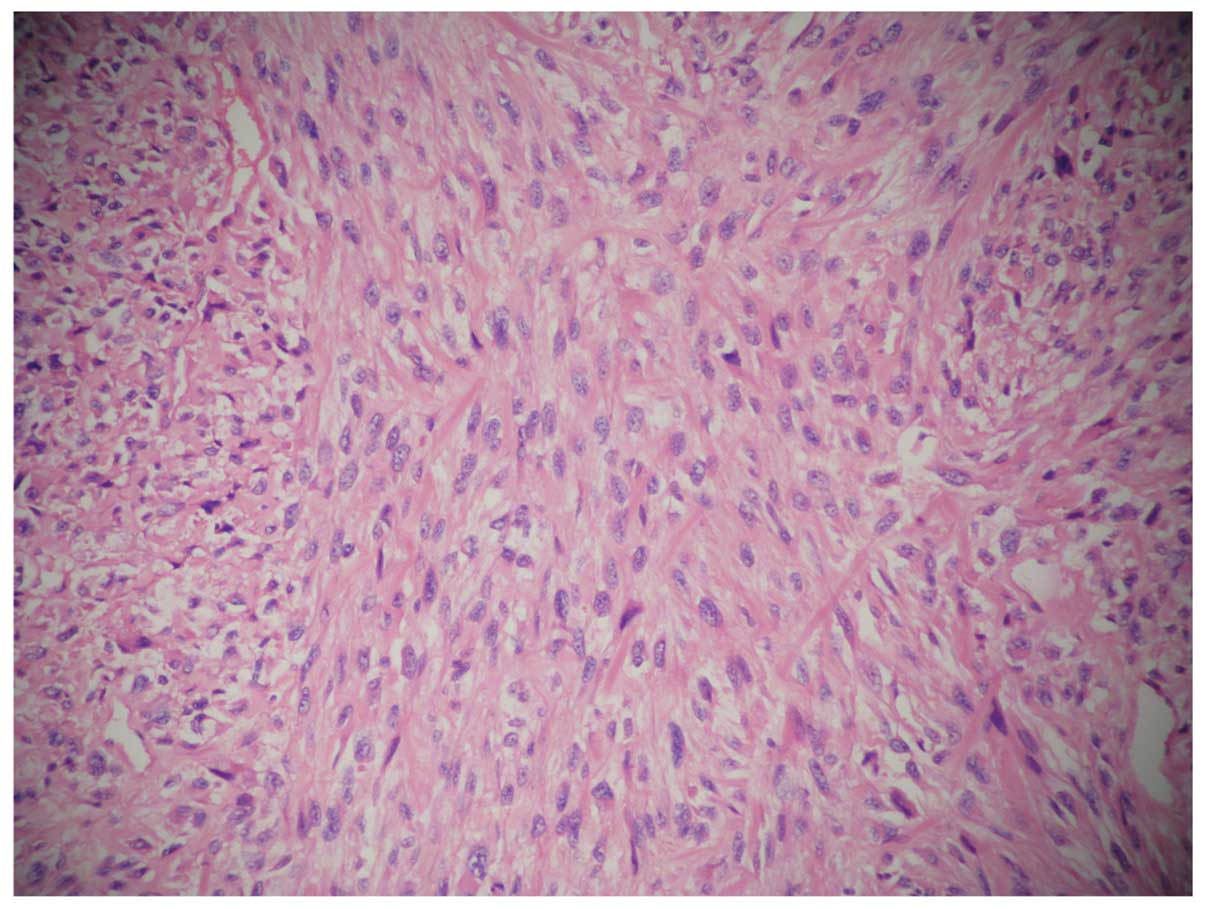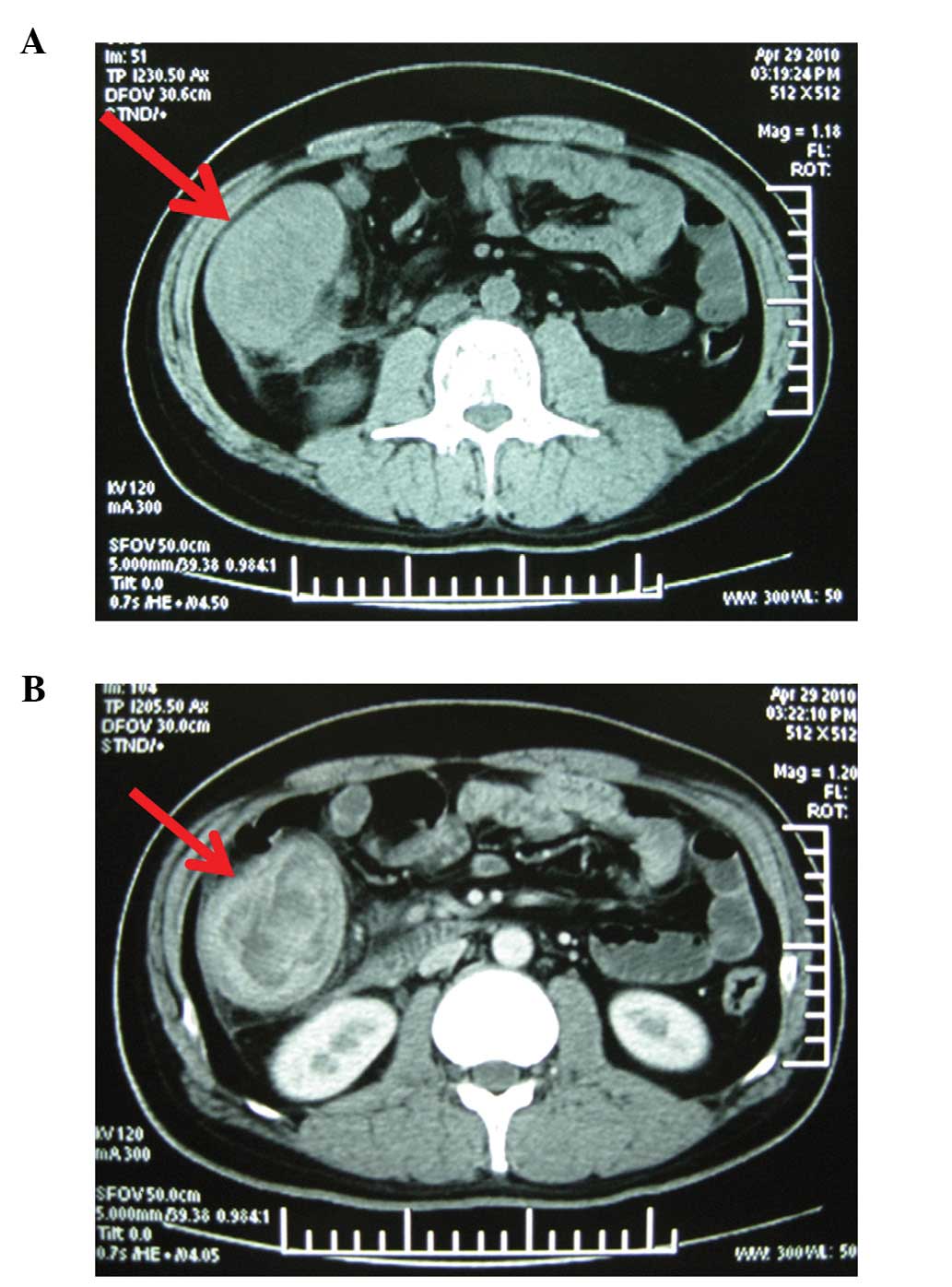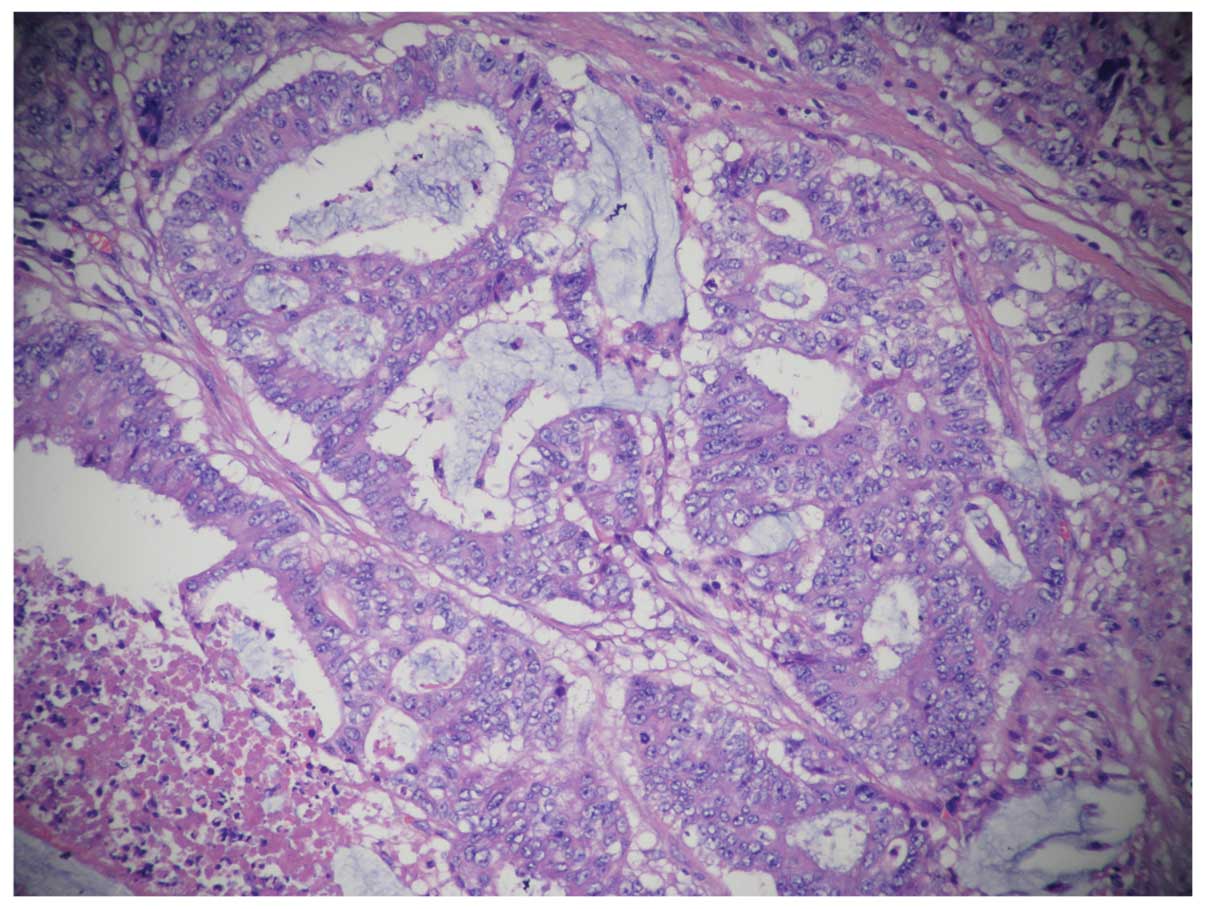A case of multiple primary malignancies and investigation of family history
- Authors:
- Xiu-Yan Huang
- Zi-Li Huang
- Jin Huang
- Zhi-Gang Wang
- Qi Zheng
View Affiliations
Affiliations: Department of General Surgery, The 6th People's Hospital of Shanghai, School of Medicine, Shanghai Jiaotong University, Shanghai 200233, P.R. China, Department of Radiology, The Central Hospital of Shanghai Xuhui District, Shanghai 200031, P.R. China, Department of General Surgery, The 6th People's Hospital of Shanghai, School of Medicine, Shanghai Jiaotong University, Shanghai 200233, P.R. China
- Published online on: August 29, 2012 https://doi.org/10.3892/ol.2012.885
-
Pages:
931-934
Metrics: Total
Views: 0 (Spandidos Publications: | PMC Statistics: )
Metrics: Total PDF Downloads: 0 (Spandidos Publications: | PMC Statistics: )
This article is mentioned in:
Abstract
The occurrence of multiple primary malignancies (MPM) in one patient is a rare but increasingly frequent event, partly due to medical advances in diagnosis and therapy. A number of theories have been proposed to explain MPM, but none have been proven. A key risk factor appears to be family history. We present the case of a 43-year-old male with multiple cancers who was first admitted to the hospital for an undifferentiated pleomorphic sarcoma/pleomorphic malignant fibrous histiocytoma (pG2T2bN0Mx stage III) of the right scapula in May 2009. The patient underwent three tumor resections in situ due to tumor recurrence. During the period of chemotherapy and radiotherapy, computed tomography (CT) revealed a 10x10‑cm enhancing soft mass of the ascending colon, which was diagnosed as mucinous adenocarcinoma in a pathological report. Laboratory data showed elevated serum levels of carcinoembryonic antigen (CEA, 20.0 µg/l; normal range, 0.0-10.0 µg/l). Certain family members of the patient had been diagnosed with endometrial, colon and pancreatic cancer. None of the family had a smoking history or presented with familial adenomatous polyposis (FAP). The patient with hereditary non-polyposis colorectal cancer (HNPCC), whose family fulfilled Amsterdam Criteria I (AC I), has remained free of disease for 15 months. Family history may be a key risk factor for MPM and HNPCC, the detailed molecular mechanisms of which remain to be elucidated. This case report with an investigation of family history may improve the clinical recognition of HNPCC and MPM.
View References
|
1.
|
DR YouldenPD BaadeThe relative risk of
second primary cancers in Queensland, Australia: a retrospective
cohort studyBMC Cancer1183201110.1186/1471-2407-11-8321342533
|
|
2.
|
NC HuSC HsiehTJ ChenJY ChangMultiple
primary malignancies including colon, stomach, lung, breast, and
liver cancer: a case report and literature reviewChin Med J
(Eng)12230913093200920137508
|
|
3.
|
O LandgrenA ThomasS MailankodyMyeloma and
second primary cancersN Engl J
Med36522412242201110.1056/NEJMc111101022150057
|
|
4.
|
Z NémethJ CzignerL IvánM UjpálJ BarabásG
SzabóQuadruple cancer, including triple cancers in the head and
neck regionNeoplasma494124142002
|
|
5.
|
A RendaN CarlomagnoNosographyMultiple
Primary MalignanciesAndrea
RendaSpringer-VerlagItaly200910.1007/978-88-470-1095-6_1
|
|
6.
|
S WarrenO GatesMultiple primary malignant
tumors: a survey of the literature and statistical studyAm J
Cancer16135814141932
|
|
7.
|
M YamasakiM HiguchiAn autopsy case of
synchronous quadruple
cancerStrahlentherapie14027527919705509810
|
|
8.
|
SL AnguranaR KapoorP KumarD KhoslaN
KumarSC SharmaFD PatelQuadruple malignancy in a single patient: a
case report and comprehensive review of literatureJ Cancer Res
Ther6230232201010.4103/0973-1482.6523720622376
|
|
9.
|
S YamamotoK YoshimuraS RiS FujitaT AkasuY
MoriyaThe risk of multiple primary malignancies with colorectal
carcinomaDis Colon Rectum4910
SupplS30S36200610.1007/s10350-006-0600-817106813
|
|
10.
|
A EngelandT BjørgeT HaldorsenS TretliUse
of multiple primary cancers to indicate associations between
smoking and cancer incidence: an analysis of 500,000 cancer cases
diagnosed in Norway during 1953–1993Int J
Cancer7040140719979033646
|
|
11.
|
S MussariM AmichettiL TomioQuadruple
cancer in a single patient: a report of four casesEur J Surg
Oncol26614616200010.1053/ejso.2000.095811034817
|
|
12.
|
DP SlaughterHW SouthwickW SmejkalField
cancerization in oral stratified squamous epithelium; clinical
implications of multicentric
originsCancer6963968195310.1002/1097-0142(195309)6:5%3C963::AID-CNCR2820060515%3E3.0.CO;2-Q13094644
|
|
13.
|
M TanyiJ OlaszE KámoryO CsukaJL TanyiZ
RessL DamjanovichDifficulties in recognizing families with
Hereditary Non-polyposis Colorectal Carcinoma. Presentation of 4
families with proven mutationEur J Surg
Oncol3413221327200810.1016/j.ejso.2008.01.00618289827
|
|
14.
|
HT LynchT SmyrkHereditary nonpolyposis
colorectal cancer (Lynch syndrome). An updated
reviewCancer7811491167199610.1002/(SICI)1097-0142(19960915)78:6%3C1149::AID-CNCR1%3E3.0.CO;2-58826936
|
|
15.
|
A WagnerC TopsJT WijnenK ZwindermanC van
der MeerM KetsMF NiermeijerGenetic testing in hereditary
non-polyposis colorectal cancer families with a MSH2, MLH1, or MSH6
mutationJ Med Genet39833837200210.1136/jmg.39.11.83312414824
|
|
16.
|
AS WarthinHeredity with reference to
carcinoma as shown by the study of the cases examined in the
pathological laboratory of the University of Michigan 1895–1913Arch
Intern Med1254655519133931868
|
|
17.
|
HT LynchGJ VoorheesSJ LanspaPS McGreevyJF
LynchPancreatic carcinoma and hereditary nonpolyposis colorectal
cancer: a family studyBr J
Cancer52271273198510.1038/bjc.1985.1874027169
|












